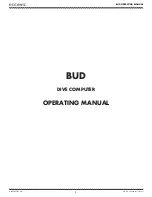
•
Straights
•
Arcs
•
Clothoid, entry and exit as well as partial
•
Cubic parabolas, entry and exit as well as partial
•
Bloss curves, entry and exit as well as partial; only available for Rail
•
Multipoints, all other elements than the previous types. Discrete points
along the curve represent multipoints. For example, a line parallel to a clo-
thoid.
The app supports the following elements in the vertical component of align-
ments:
•
Straights
•
Arcs
•
Quadratic parabolas
•
Asymmetric quadratic parabola
•
Multipoints, all elements that cannot be described by one of the previous
types are represented by discrete points along the curve.
43.6.3
Road - Basic Elements for Stake and Check Measurements
In general, there are four different basic stakeout and check elements:
•
Surface grades, for example, the final carriage way
•
Lines, for example, a centreline
•
Slopes, for example, the end-slopes of a cross section
•
Surfaces, for example, a DTM surface
a
a
a
b
b
c
a
b
b
c
Road_002
a
Lines
b
Surface grades
c
Slopes
Every stakeout or check is based on one or more of these four base elements.
For example, a road crown consists of two surface grades with one common
line.
The stake out of a line is used in different situations:
•
Centre line of a road
•
Edges of a road or any other change in slope
•
Gutters
•
Pipelines, cables and any other line-related design feature
a
c
b
Road_003
a
Line to stake out or check, in this case the centreline
b
Line offset
c
Line height difference
Vertical alignment
Description
Lines
Roads - General
687
















































